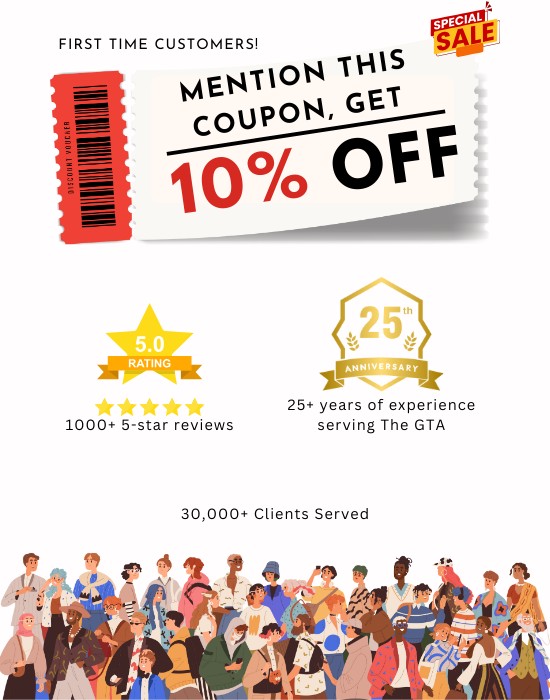In this urban ecosystem, choosing a certified and licensed pest management professional is not just preferred. It is mandatory under Ontario’s Structural Applicator License regulations. Licensed PMPs are trained to apply pesticides in accordance with label-is-the-law principles and are required to observe Restricted Entry Intervals (REI) for public safety. Their understanding of pest stratification, behavioural resistance, and cross-attraction among species ensures targeted, sustainable, and compliant treatments across residential, commercial, and institutional properties.
As Toronto continues to grow vertically and densify, the demand for scientifically informed, safety-conscious pest control has become integral to maintaining both public health and urban livability.
Common Pests and Control Methods in Toronto
Toronto’s combination of dense housing, aging infrastructure, and diverse food industries makes it a breeding ground for persistent urban pests. Among the most common are Norway rats, Pharaoh ants, German cockroaches, carpenter ants, and bed bugs, each requiring distinct treatment strategies and monitoring methods.
Norway rats thrive in subterranean environments and are frequently observed in older districts near Queen Street West, Yonge & Dundas, and Bathurst & King. Effective management depends on tamper-resistant bait stations, mechanical traps, and rodenticide applications supported by load dock entry point analysis in commercial sites. Technicians also inspect harborage sites such as sewers and structural voids, applying biorational pesticides or exclusion sealing to prevent re-entry.
Pharaoh ants and German cockroaches, both exhibiting thigmotactic behavior, prefer tight crevices and warm, moist environments such as restaurant kitchens and apartment plumbing chases. Targeted crack and crevice treatments combined with microencapsulated formulations (ME) allow long-lasting control while reducing off-target exposure. Their capacity for behavioral resistance and sympatric nesting demands rotational chemistry and IPM protocols with regular threshold monitoring.
Carpenter ants are frequent invaders in detached homes across East York and Scarborough, where moisture-damaged wood creates ideal nesting sites. Residual sprays, dust injections, and void treatments are standard, while inspection logs ensure structural vulnerabilities are corrected through exclusion and repair.
Bed bugs, a growing concern in high-density rental and hospitality sectors around Bay & Bloor and King Street West, are best managed using heat treatment or thermal remediation. This non-chemical approach targets all life stages through lethal temperatures, minimizing re-infestation while maintaining Health Canada PCP compliance.
Understanding pest stratification, the vertical distribution of pest activity in multi-level structures, is critical across Toronto’s high-rise landscape. PMPs leverage this knowledge to design targeted programs for condos, offices, and mixed-use developments, ensuring safe and effective pest elimination while maintaining environmental responsibility.
Evaluating the Best Pest Control Companies in Toronto
Toronto’s pest management market is well-established, with several reputable providers delivering specialized services to residential, commercial, and industrial sectors. The most reliable companies share measurable qualities: certified personnel, fast response times, transparent service documentation, and strict WHMIS compliance.
Top-rated firms in the city operate under Health Canada and Ministry of the Environment, Conservation and Parks licensing, using products with verified PCP registration numbers. Their technicians maintain Structural Applicator Licenses and follow IPM programs that emphasize prevention, exclusion, and environmental stewardship. Customer confidence is reinforced by detailed service logs, proactive follow-ups, and adherence to Restricted Entry Interval (REI) safety measures.
Reviews and client feedback remain a central factor in consumer trust. Toronto residents often evaluate pest control providers based on long-term results, technician professionalism, and compliance with Health Canada standards. Commercial clients, such as restaurants near St. Lawrence Market or hotels along Front Street, also rely on audit-ready documentation for regulatory inspection.
Among leading companies, GTA Toronto Pest Control stands out for its consistent performance across residential, multi-unit, and commercial settings. The firm’s integrated approach combines advanced formulations, digital monitoring, and same-day response capabilities. Their team of licensed PMPs delivers solutions tailored to local pest pressures while maintaining compliance with all provincial safety regulations.
For detailed information on inspection protocols, cost structures, or custom pest management plans, readers can contact us to consult with a licensed technician familiar with Toronto’s unique pest environment.









